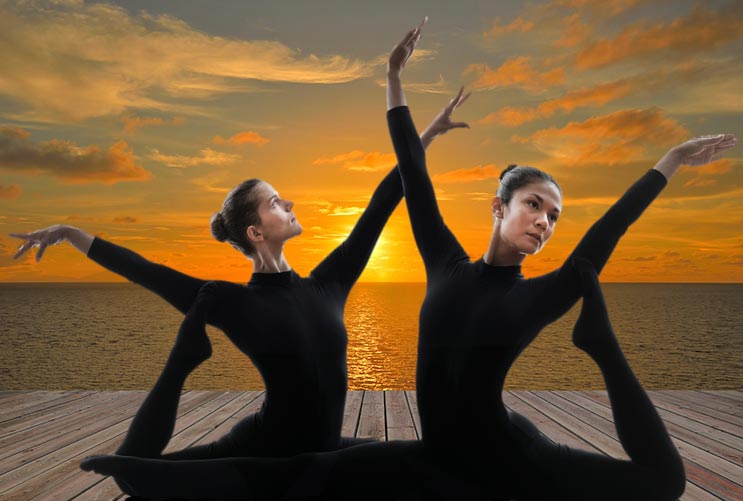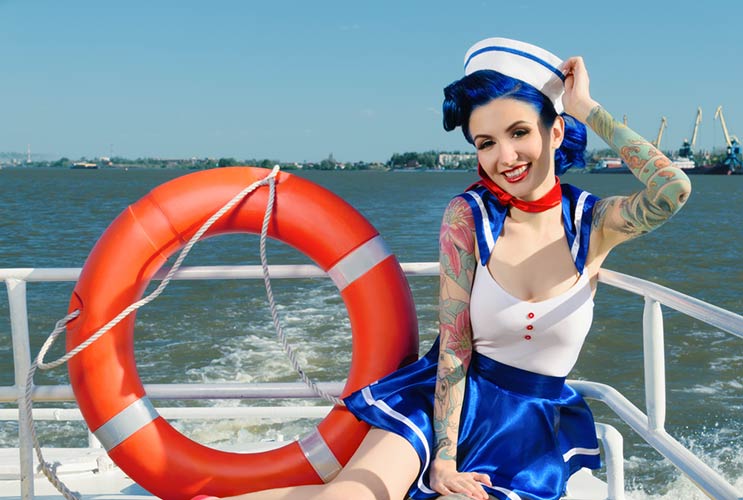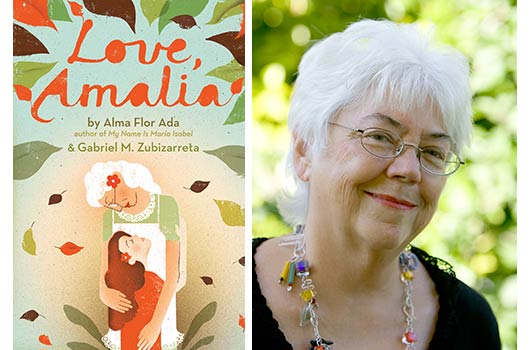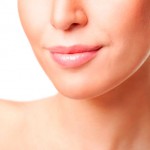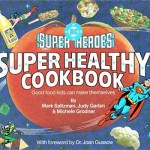
My stepdaughter recently asked us to buy magazines for her Girl Scout troop. My partner Joseph and I agreed, and she sent us a list of options and an order form. Joe and I decided we’d each choose one subscription. He made his choice quickly, but I pored over the list, unable to decide.
Magazines and I have had a complicated relationship for years. We got off to a great start. As a child, I received subscriptions to kids’ magazines like Jack & Jill, but the first magazine I subscribed to on my own was called Hollywood: Then & Now. Even at the age of eleven, I was a classic movie buff, and I would dreamily turn the pages of each new issue, devouring stories about movie stars like Robert Mitchum, Jane Russell, and—one of my personal favorites—Natalie Wood.
Read Related: Self-Acceptance How To’s For Latinas
MAGAZINES FOR A YOUNG GIRL
The magazine was so old-timey, with its black-and-white photographs and sensational stories of old movie star scandals, that it served a dual purpose for me. I got to immerse myself in the world of old Hollywood. And I felt transported to another time. It seemed I could be a young girl in the 40’s or 50’s, drinking a soda and reading about the endeavors of my favorite movie stars. It was then that magazines became, for me, permission slips to slip into alternate realities; to dream, to fantasize.
My next subscription, again in my teens, was a sweet girl’s magazine that celebrated diversity. The tips were practical, the models were a happy-looking bunch who came in different shapes and sizes, with long hair, short hair, even blue hair. For an alternative girl like me, who never looked like anyone else, the world of that magazine was a comfortable one. Articles about how plastic baby barrettes were back in style, or how to make a skirt out of neckties, suited me just fine, and I slipped into that world as happily as I had into Hollywood: Then & Now (which had since stopped being published).
Read Related: 5 Ways to Nurture Your Child’s Positive Body Image
ANOTHER KIND OF MAGAZINE
But then the sweet girl’s magazine stopped being published, too, and I discovered a new kind of magazine. This was the woman’s magazine, a magazine that focused on beauty and glamour and style and shopping and makeup. These magazines were all the rage in high school; my peers carried them tucked into their notebooks and ripped pictures out and taped them to the insides of their lockers. The women on the covers of these magazines had none of the bright-eyed, neatly curled glamour of those stars I had loved, like Natalie Wood. This was the era of Cindy Crawford, of straight hair that tumbled this way and that; of models whose lips parted just so. I had no idea what to do with these images, or with the seemingly head-to-toe modifications advertised within the pages of these glossy, fragrance-filled tomes.
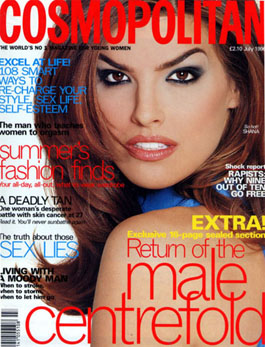 I remember an issue of a particular women’s magazine which I inspected from front to back. On the cover was the image of a model, Shana Zadrick, with pin-straight, windblown hair highlighted with shades of red. Her eyebrows were impeccably arched; her eye makeup elaborate (as far as I could tell, black liquid eyeliner and dark eyeshadow accentuating her lids); her mouth parted and exposing teeth as white as could be. And then, almost humorously, the headline beside the face of Shana: KEEP IT SIMPLE.
I remember an issue of a particular women’s magazine which I inspected from front to back. On the cover was the image of a model, Shana Zadrick, with pin-straight, windblown hair highlighted with shades of red. Her eyebrows were impeccably arched; her eye makeup elaborate (as far as I could tell, black liquid eyeliner and dark eyeshadow accentuating her lids); her mouth parted and exposing teeth as white as could be. And then, almost humorously, the headline beside the face of Shana: KEEP IT SIMPLE.
The mixed messages these magazines issued were almost too much for my brain to comprehend, and they fostered within me—for the first time—a real dissatisfaction with the way I looked. My hair was not pin-straight. I had my father’s strong Arawak nose. My eyebrows were not impossibly arched. And I didn’t go around bare-shouldered with my head thrown back and my lips parted (getting through high school that way would have been difficult). There were no plastic baby barrettes in these magazines, or skirts made out of neckties. One didn’t celebrate who one already was; one spent money and effort attempting to attain the unattainable.
A NARROW IDEAL
I’m sure the editors of those magazines would say that the images were fantasies, but I don’t think that’s entirely true. At the same time I was being shown these super-slim, airbrushed, windblown models, there were articles about diets and plastic surgery. After finishing an issue, I tended to race out and buy eyeliner, or concealer, or another expensive product that was advertised to “fix” one of my many flaws—flaws that I’d never really thought about before.
It turns out I wasn’t alone. The American Psychological Association’s Report of the APA Task Force on the Sexualization of Girls reported that, “teenage girls 12 to 19 years of age spent over $8 billion on beauty products… spending more in this product category than in any other except clothing/jewelry.” This desperation to, in essence, buy beauty, seems directly linked to “exposure to media emphasizing a narrow ideal of women’s sexual attractiveness,” as succinctly put by the APA.
Although I couldn’t have articulated it as a teenager, the model Shana, with her half-lidded, heavily made up eyes, and parted lips, was the very definition of a sexualized female, something that women’s magazines often specialize in. And all the models in the magazines I pored through at that time were styled, made-up, and photographed to reiterate that ideal: tall, thin, with perfect skin and straight, shiny hair; often in various states of undress, looking like they just rolled away from a romp in the bedroom.
The repercussions of this “ideal” were—and still are—felt by a great deal of young women. According to the APA, “young women who viewed fashion magazines versus news magazines preferred to weigh less, were less satisfied with their bodies, were more frustrated about their weight, were more preoccupied with the desire to be thin, and were more afraid of getting fat than were their peers who viewed news magazines.” And I thought the news, with its coverage of war and politics, was scary! It seems I would have been an all-around more confident (and knowledgeable) young woman had I stuck to newspapers.
“A BETTER YOU”
There were other types of women’s magazines, too, that captured my attention as a young woman. These were magazines that focused on fixing all aspects of your life. Each month, they promised a Stronger, Better You! They involved tips for thrilling your man in bed, for catching him when he starts an affair with a woman he meets on a cheating website, and for avoiding the “Top Ten Arguments That Every Couple Has.” These were magazines that would plant the feverish urge within me to revamp my wardrobe. These were magazines that featured “inexpensive” alternatives to designer clothes—a $195 blazer as opposed to the $595 version, thus “saving” their readers $400 while actually costing them $195. Often, these magazines threw in a fear-factor type story that made me afraid to go out at night or attend the Puerto Rican Day Parade.
STICKING TO MY PARENTING ZINES
It was hard, but I quit those magazines, choosing to subscribe only to the ones for parents. Now, having gone without for so long, I’ve mostly forgotten what I disliked so much about my nose or my hair, and I’ve stopped spending money on beauty and wardrobe fixes. It’s tempting, looking at that list my stepdaughter sent me, to slip back into that old dream world, but I’m going to resist.
In the meantime, I still have to pick out a subscription to support the Girl Scouts—and I find myself missing Hollywood: Then & Now.


